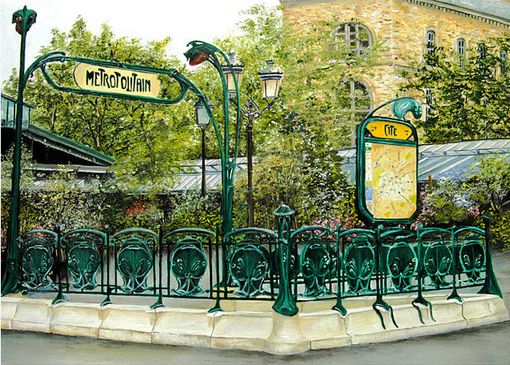The spread and Development of Coffee in China-Coffee and Western Culture
The spread and Development of Coffee in China-Coffee and Western Culture
The history of coffee introduced into China is not long, and it was not until 1884 that coffee was first planted in Taiwan. In the mainland, the earliest coffee cultivation began in Yunnan. At the beginning of the 20th century, French missionaries brought the first batch of coffee saplings to Binchuan County, Yunnan Province, and coffee began to be grown on the mainland.
In terms of natural conditions, many parts of China are very close to Latin America, South America, India, Indonesia and other places, with congenital conditions for coffee cultivation. However, Chinese people have been drinking tea for thousands of years. As the origin of tea in the world, there is more or less resistance to coffee as a foreign beverage in consumption habits and concepts. Therefore, for a long time after coffee was introduced into China, coffee cultivation did not receive enough attention, and the expansion was extremely slow.
Until recent years, with the impact of foreign culture and way of life, people's drinks have become increasingly diversified, coffee has entered more and more of the lives of ordinary people, and coffee cultivation has gradually developed. China's coffee consumption is rising year by year, forming a huge potential consumer market.
The great potential of China's coffee market can not be ignored. Some internationally renowned coffee companies have chosen Shanghai as their production base and adopted a long-term strategy to expand the Chinese market. At the same time, China is also actively cultivating its own coffee planting base. Yunnan Province in China is very close to the coffee growing areas of Colombia, in which Simao, Lincang, Dehong, Baoshan and other areas have begun to develop coffee planting industry, and the quality of small-grain coffee has been fully affirmed by international coffee organizations. Industry insiders predict that in the near future, these regions will fill the gap in China in the world coffee planting map.
As a good place to relax and even fall in love, coffee has gradually developed into a culture. Whether it is freshly ground coffee beans or fresh hot coffee at 60 °C, it exudes a rich aroma and makes people intoxicated. Starbucks first choice, Italian espresso (Esbriso), Cabochidon, latte and flavored coffee provide a variety of flavors for people who patronize the coffee shop. Chinese people also gradually like to make their own coffee. Making a cup of fresh hot coffee for your lover has gradually become a fashion.
As a student, I naturally feel that every day tasting Starbucks coffee, eating Haagen-Dazs desserts, carrying fashionable designer bags will be very comfortable life, that is petty bourgeoisie, that should be the quality of life I pursue. But with these, do you really have a high quality of life?
The rise of Coffee Culture in China
As China becomes richer, coffee culture is springing up in the land of tea drinkers.
Coffee consumption is growing at an astonishing 15% a year, compared with the global average of 2%, according to the London-based International Coffee Organization. This partly stems from the reality that China's starting point is relatively low. The average Chinese drink only three cups of coffee a year, compared with 500 to 700 cups for Americans. However, because of the size of the Chinese market, analysts see great potential.

Important Notice :
前街咖啡 FrontStreet Coffee has moved to new addredd:
FrontStreet Coffee Address: 315,Donghua East Road,GuangZhou
Tel:020 38364473
- Prev

Kenya will serve as the 2017 American Fine Coffee Association-to explore the US-China coffee market
Kenya will be the official portrait country of the American Fine Coffee Association (SCAA) exhibition in 2017 to expand the market share of its coffee products in the United States and increase the global visibility of its products. The exhibition, the largest coffee trade fair in the world, will provide a direct link between Ken coffee producers and US coffee buyers. The United States imported 7000 tons of coffee this year, up from 4000 last year.
- Next

Where is the earliest coffee growing place in China? where is the first manor area introduced?
Where was the first coffee growing area in China? in the mid-1950s, the coffee planting area in Yunnan once reached 4000 hectares. Unfortunately, Sino-Soviet relations broke down after the 1960s, and 4000 mu of coffee plantations were artificially shelved or replanted with other crops. Until the end of the Cultural Revolution, Yunnan could only have the roadside of Yunnan-Burma Road or the courtyard of the farmhouse.
Related
- Being chased out of the rain in front of Starbucks?! Store: Sheltering from rain under umbrellas poses a safety hazard
- The white moonlight has changed?! Lucky launches "Big Winter Pear American"
- Hand-brewed coffee three-stage method, high-sweet and universal brewing method to share! What does the high sweet water level of hand-brewed coffee mean?
- What is the difference between raw, refined and full espresso coffee? How to extract espresso and taste good?
- A complete list of coffee bean names and their meanings! What is Yejia Shefi coffee? Where is Mantelin coffee?
- What grade does Arida Manor Kaduai coffee beans belong to? What treatment is Arida ASD slow anaerobic sun exposure?
- The milk tea cup becomes smaller?! Overlord Tea Girl launches a new "Return to Yunnan" series
- Accused of selling counterfeit and high-priced coffee beans! Well-known boutique coffee brand "Oukelao" bowed and apologized!
- How to make espresso dumplings? Can I eat coffee and glutinous rice balls together?
- Save the unformed and stagnant powder cakes in one second! What is the problem with stagnant water in the powder bowl of the espresso machine?

